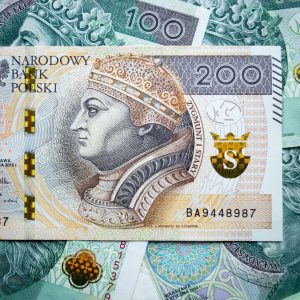India’s $1 Trillion Forex Reserves: Opportunities and Challenges for the Country’s Financial Markets
India’s foreign exchange reserves recently crossed the $1 trillion mark, a significant milestone for the country’s financial markets. This achievement showcases India’s growing economic strength and resilience, providing both opportunities and challenges for the future.
Foreign exchange reserves are essentially the foreign currencies held by a country’s central bank. These reserves serve as a cushion to stabilize the domestic currency, manage external shocks, and ensure smooth international trade and investment flows. India’s forex reserves have been steadily increasing over the years, primarily driven by strong capital inflows and a robust current account surplus.
The $1 trillion forex reserves offer several opportunities for India’s financial markets. Firstly, it strengthens the country’s macroeconomic stability by providing a safety net against external vulnerabilities. With a significant reserve buffer, India can better withstand any sudden outflows of foreign capital, reducing the risk of currency depreciation and economic instability.
Moreover, the ample forex reserves enhance India’s credibility and attractiveness as an investment destination. Investors are more likely to invest in a country that has a strong financial position and can weather economic uncertainties. The increased investor confidence can boost foreign direct investment (FDI) and portfolio inflows, further stimulating economic growth.
Additionally, India’s forex reserves offer the country greater flexibility in pursuing monetary policy objectives. With an abundant reserve stockpile, the central bank can intervene in the foreign exchange market to manage exchange rate fluctuations. This allows the central bank to stabilize the currency’s value, promoting export competitiveness and ensuring price stability in the domestic economy.
However, along with the opportunities, India’s $1 trillion forex reserves also present some challenges. One of the key challenges is managing the composition of the reserves. Currently, a significant portion of India’s reserves is held in low-yielding foreign government securities, such as US Treasury bonds. This can result in lower returns on investment and hamper the overall returns of the reserve portfolio.
To address this challenge, India needs to diversify its forex reserves into higher-yielding assets, such as equities, corporate bonds, and other emerging market currencies. By diversifying the reserve composition, India can potentially earn higher returns and optimize the utilization of its forex reserves.
Another challenge is the potential impact of a sharp appreciation of the domestic currency on the country’s export competitiveness. A strong currency makes exports more expensive, potentially reducing export volumes and hurting the competitiveness of Indian industries in the global market. The central bank needs to strike a balance between managing exchange rate fluctuations and supporting export-oriented sectors.
Furthermore, maintaining a sizable forex reserve comes with the risk of over-reliance on external financing. While India’s forex reserves act as a buffer against external shocks, it is crucial to ensure that the country’s current account remains sustainable in the long run. A structural improvement in the current account balance, driven by measures such as boosting exports and reducing import dependency, is essential to reduce the reliance on external financing.
In conclusion, India’s achievement of $1 trillion forex reserves presents a multitude of opportunities and challenges for the country’s financial markets. The reserves strengthen India’s macroeconomic stability, enhance investor confidence, and provide flexibility in monetary policy management. However, managing the composition of reserves, addressing the impact of currency appreciation on exports, and ensuring a sustainable current account balance are critical challenges that need to be addressed. By effectively navigating these challenges, India can leverage its forex reserves to further bolster its economic growth and financial stability.






